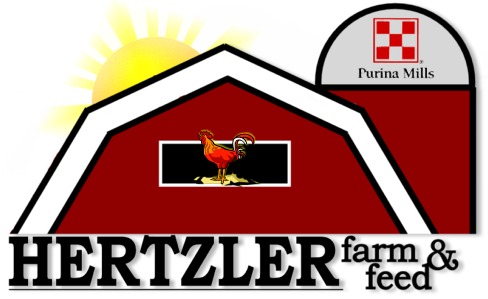Equine Worming and Parasites
A parasite is a small organism that lives on or in and at the expense of a larger organism called the host. |
| |
1. Ectoparasites – External Parasites
-Attack the skin and body openings of an organism
|
–Musca autumnalis
-feed on secretions around the eyes, nostrils and mouth
-best prevention is stabling during peak fly activity and also the use of fly masks and repellent containing pyrethrum
|
-spend entire life cycle clinging to the hairs of animal
-can cause severe itching
-treat with organophosphate insecticides
|
-characterized by intense itching
-spread by direct contact
|
2. Endoparasites – Internal Parasites
-live in internal organs, body cavities and tissues
|
Nematodes (roundworms)
-Strongyles
- 54 species
- bloodsucking parasites of large intestine
- can cause anemia if infestation is severe
- encysted Strongyles can be the most dangerous worm species
-Ascarids
- mainly a problem in foals
- very large yellowish-white worm
- characterized by dull hair coat, dry skin and distended abdomen
- mature in the small intestine
|
Stomach Bots
- larvae botflies of the genus Gasterophilus
- Botflies deposit eggs on the jawbone, which then hatch within 5-6 days and crawl down into the mouth where they eventually end up in the stomach.
|
Hair worms
- Trichostrongyles axei
- foals are very susceptible
- The adult worm occurs in the stomach and small intestine, irritating and eroding the finger like projections or villi of the gut.
- Hair worms can cause severe damage and may cause bleeding into the intestines, this may also lead to dark foul smelling diarrhea because the villi are unable to digest food properly.
|
Intestinal threadworms
- Strongyloides westeri
- foals are very susceptible
- If the larvae enter through the skin the next stop is the lungs. There they cause bleeding and respiratory problems. After they mature the worms go up the windpipe, are coughed up and swallowed where they end up in the small intestine.
- If left untreated in foals threadworms can cause diarrhea, weakness, weight loss and failure to thrive and grow at a normal rate.
|
| Lungworms |
- Dictyocaulus arnfieldi
- The larvae go through the walls of the intestine into the circulatory system and into the lungs.
- If there are large numbers of lungworm larvae present in the lungs the lining of the small air sacs in the lungs can become irritated causing a severe cough.
- Older horses are less susceptible because they develop an immunity whereas if foals are infected they could die from lungworm infection.
|
| Neck Threadworms |
- Onchocera
- Unlike many other worms the neck threadworm has an indirect life cycle. The threadworm relies on another organism to get it to the horse. In this case the biting midge transmits the threadworm from horse to horse.
- If left untreated adult worms can travel into the ligaments and tendons of the horse. They can cause swelling and bumps because of the hardening of dead worms. They may also invade the lenses of the eye causing irritation, swelling and in some cases even blindness.
|
| Pinworms |
- Oxyuris equi
- Larvae mature in the large intestinal lining for four to five months. Adult female worms move to the horse anal area where they lay eggs. There is a sticky coating around the eggs which causes severe itching.
- If left untreated some horses will rub their tail relentlessly causing the hairs to break off. This condition is called “rat tail”
|
| Stomach worms |
- Draschia megastoma & Habronema muscae
- Larvae of these parasites are ingested by the common housefly or stable fly maggots, which develop in manure. The worms develop inside the flies’ maggots. The flies mature and then deposit larvae on the lips, nostrils, wounds and other naturally moist areas.
- If left untreated a small wound infected with Habronema and Draschia larvae prevent healing. These chronic, non-healing wounds are commonly called “summer sores”. The larvae deposited on the eyes can also cause conjunctivitis. Larvae that are eaten can cause gastritis and formation of tumor-like growths, which may rupture.
|
| Tapeworms |
- Anoplocephala perfoliata
- Tapeworm eggs develop in the intermediate host, the grass mite, over a two to four month period. When mites are swallowed, tapeworms mature in four to six weeks.
- When left untreated a severe case of tapeworms can cause intestinal bleeding and irritation. There can also be a fatal intestinal blockage occur as the worms accumulate at the ileocecal junctions-three way junction between small intestine, large intestine and cecum.
|
| Some Recommended Worming Routines |
Everyone has their own theory on the correct worming routine. Consult your veterinarian for the schedule that will best suit your horse and area.. Following are several recommended routines.
|
1. Beginning in March a double dose of the chemical Pyrantel Pamote (Strongid, Rotectin 2)
Every 6-8 weeks thereafter worm with the chemical Macrocyclic Latone (Ivermectin – Eqimectrin, Zimecterin, Rotectin 1 and Eqvalan) or the chemical Moxidectin-Quest1.
Around Thanksgiving give a double dose of the chemical Pyrantel Pamote.
* you can also rotate your Macrocyclic Latone product with a Benzimidazole product (Anthelcide, Equi-cide, Benzelmin, Safe-guard, Panacur)
|
2. If you choose to do a daily wormer such as Strongid C you do not need to double dose Pyrantel Pamote (Strongid or Rotectin 2) but you still need to worm with either a Macrocyclic Latone or Benzimidazole – preferably rotating the two- every 6-8 weeks. The day you give your paste wormer do not give your daily wormer.
|
3. Quest recommends worming only four times a year with restricted use in foals. The label claims there is no need to rotate wormers when using this product..
|
Debuggin Deworming Labels
|
| |
|
What is lurking in the Fine Print on YOUR Dewormer?
|
Make sure you’re getting broad spectrum control. Look carefully at the parasite species and stages each product says it will control. Some dewormers target only a half-dozen internal parasites, while others are effective against a much broader range.
What’s not on the label can be important, too. If a dewormer doesn’t mention “bots”, for example, there’s a reason. Some deworming products don’t have a label claim for controlling bots. For a product to control bots, its label must say “boticide”.
To maximize parasite protection for your horse, look for products that offer broad-spectrum control. Ivermectin, for example, is effective against 34 species and stages of parasites and is a boticide. A very effective boticide, Ivermectin, controls all stages of the two most common species of bots.
|
Beware of Age Restrictions Young foals are particularly at risk from internal parasites and the consequences can be grave. Foals can be treated at 7 days of age to help prevent “foal-heat diarrhea” which can be associated with Strongyloides westeri (intestinal threadworms).
Another example is Ascarids or roundworms, which can cause serious problems for foals.
Not all dewormers, however, are labeled for use on young foals. Scan the fine print for age restrictions before selecting a deworming product. Moxidectin, for example, is restricted against the use in foals younger than 4 months. Products that are labeled as safe for use on foals without age restrictions can help protect foals during this critical early period. And remember to check which parasites are controlled by your dewormer.
|
Scrutinize Duration Claims Package instructions will specify how often you will need to deworm your horse for maximum effectiveness. Most deworming products call for reapplication every six to eight weeks.
Some products may claim a longer duration, but take a close look –you may find that their extended killing power applies only to one or two parasites. QUEST for example, claims 84 day effectiveness, but that claim only applies to one parasite. Your horse is exposed regularly to other parasites in addition to small Strongyles and should be dewormed more often to control the broadest spectrum of parasites.
|
Investigate Dosage and Weight Instructions Deworming formulations vary, so read those label directions carefully to make sure you’re giving the proper dose for your horse’s weight. Each single dose syringe of ZIMECTERIN can be used to treat one horse weighing up to 1,250 pounds; a single dose syringe of QUEST treats horses only up to 1,150 pounds; a single dose syringe of SAFE-GUARD treats horses up to 1,000 pounds.
|
| Other Control Methods |
Advances in science and sanitation have helped horse owners control parasite infestation.
- Whatever deworming method you choose, use it diligently. If you choose rotational deworming, be sure to follow the rule of thumb and deworm every 6-8 weeks, or as indicated by laboratory exam of your horses manure. If you choose a daily dewormer, be sure to add an effective boticide at strategic times – at least twice per year – to kill bots. If you choose to deworm your horse with a broad spectrum dewormer make sure the product of choice is truly broad-spectrum. Don’t blindly accept advertising claims that advocate deworming less often, no matter what the product is, unless there is proof that all the parasites that threaten your horse are effectively killed on that less stringent schedule.
- Do not spread fresh, uncomposted manure on grazing pastures. Compost manure at least a year, turning it frequently to produce heat needed to kill the internal parasite larvae.
- Remove manure from your horse’s stall daily. Some horse owners and veterinarians recommend mowing and chain harrowing to help expose larvae to the sun and wind, which can help dry out and kill the larvae. This method works better is hot dry areas. Before you harrow, contact your equine agricultural specialist and/or local university to determine if this method is an effective way to kill parasite larvae in your area.
- Don’t overcrowd pastures. Experts advise a minimum of one acre per horse, more if pasture is thin or soil is poor.
- Rotate pastures between cattle, sheep and horses since parasites are different between species.
- Wash water buckets regularly and replace water daily.
- Use repellents and insecticides as recommended.
|
| Acknowledgements:Deworming GuideSpin-works Equine Educational Series |
|
Deworming Details
| Chemical |
Brand Name (Weight Per Syringe) |
Total # Parasites Species & Stages |
Bot Species |
| ivermectin |
Zimecterin, Rotectin 1, Equimecterin, Eqvalan (1,250) |
34 |
6 |
| moxidectin |
Quest (1,150)
|
22 |
2 |
| pyrantel pamoate |
Strongid P, Rotectin 2 (1,200) |
6 |
no claim |
| pyrantel tartrate |
Strongid C, Strongid C 2x (N/A) |
18 |
no claim |
| pyrantel tartrate (single dose) |
Manna Pro, Purina, KAECO (1,000)
|
7 |
no claim |
| oxibendazole |
Anthelcide EQ (1,200)
|
12 |
no claim |
| oxibendazole |
Equi-cide, Benzelmin (1,000) |
7 |
no claim |
| fenbendazole |
Safe-Guard, Panacur (1,000) |
5 |
no claim |
Notes:
- All are registered safe to be used on breeding mares and stallions.
- All are are registered safe to be used on foals and miniature horses except for restricted use with Quest. They need to be four months of age or older.
- The recommended treatment for each wormer is 6 times per year except for Strongid C and Strongid C 2x which is fed daily and Quest which is used quarterly (4 times a year)
- Tapeworms – no registered label claims for any of these products. Consult with your veterinarian.
- For broadest-spectrum control, use ivermectin every eight weeks. Ivermectin has been shown to provide 84-day strongyle fecal egg count suppression. However, this control is for only one parasite and should not be confused with broad-spectrum parasite control.
|


